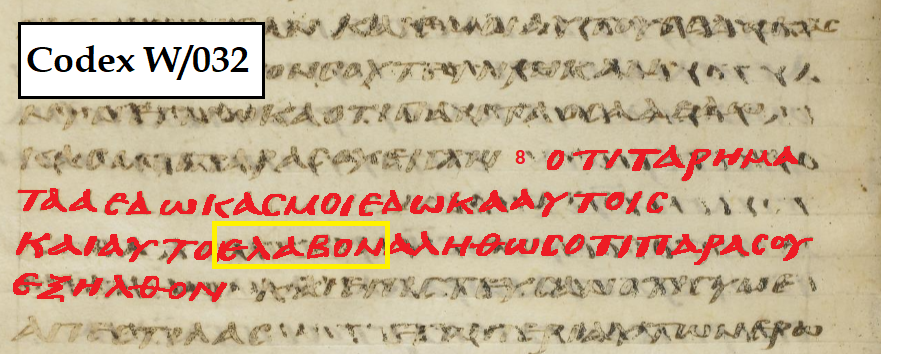In John 14:14 there is an
interesting translation-impacting textual puzzle: did Jesus tell his followers to pray to him?
ESV: If
you ask me[a] anything
in my name, I will do it. [footnote:
Some manuscripts omit me]
NIV: You may ask me for
anything in my name, and I will do it.
CSB: If you ask me[a] anything in my name, I will do it.[b] [footnotes: Other mss omit me - Other mss
omit all of v. 14
NASB: If you ask Me
anything in My name, I will do it.
NLT: Yes, ask me for
anything in my name, and I will do it!
EHV: If you ask me[a] for
anything in my name, I will do it. [footnote:
Some witnesses to the text omit me.]
WEB: If you will ask anything in my name, I will do it.
KJV: If ye
shall ask any thing in my name, I will do it.
EOB: “If you will ask anything in my
name, I will accomplish it.”
[footnote: Several ancient
authorities (P66, ﬡ, B, W, D, Q read: “whatever you ask me in my Name”]
The Byzantine Text is not
uniform.
2005 Robinson-Pierpont
Byzantine Textform has με in the
text and non-inclusion noted in the side-margin. The Hodges-Farstad 1982 Majority Text does not have με in the text; inclusion is noted in the apparatus. Antoniades’
1904 compilation does not have με.
What’s the external evidence
say? Did John write εάν τι αἰτήσητέ με ἐν τῷ ὀνόματί μου ἐγὼ ποιήσω, or εάν τι αἰτήσητέ ἐν τῷ ὀνόματί μου ἐγὼ ποιήσω?
A,
D, G, K, L, M, P, Ψ, 69, 157, 706 866 100 114 129 164 177 184 200 204 205 236
237 238 239 260 275 276 298 299 1071 1241 and 1424 and Coptic
versions do not have με.
In addition, X, L*, 0141, f1,
565, pc, b, vgms, the Sinaitic
Syriac and the Palestinian Aramaic and Armenian
versions omit the entire verse – which I regard as an effect of simple
parablepsis.
Old
Latin witnesses suporting non-inclusion:
a, aur, b, d, e, q, r1 vgmss .
A
smattering of witnesses replace με with a reference to the Father, mimicing
John 16:23. GA 167 uniquely reads, after
μου, ἐγω ποιήσω ἵνα δοξάσθη ὁ πατὴρ ἐν τῷ υίῷ.
After
μου Codex M/021 (Campianus) has the conflate reading ἐγὼ τοῦτο.
P66c
reads τοῦτο ἐγὼ (a different conflate reading).
Witnesses supporting με
include p66 א B E H S U W Δ Θ 060 f13
28 33 579 700 892 1006 1230vid 1242
1342 1646 some lectionaries (including 64, 284, 329, 514, 547, 672, 813,
1231) and itc itf vg
syrp syrh and the Gothic version and Fulgentius.
There is an issue regarding the testimony of P75. A sizeable lacuna prevents the firm
establishment of the testimony of P75 for either inclusion or non-inclusion.
Considering that in John 15:16, Jesus says plainly “The
Father will give you whatever you ask him in my name,” and the meaning of this
passage is uniform in all transmission-streams, it is unlikely that John would
represent Jesus saying both things – with the Father, and himself, as the
person to whom the apostles were to address their prayers. (John 16:23 affirms the same point.) The
possibility exists that με originated deliberately,
due to a desire to enhance the deity of Christ – augmenting the Son’s role in
answering prayer. An alternative
explanation is that με originated as an error of dittography – a careless
repetition of the final syllable of αἰτήσητέ – and instead of correcting via
the simple removal of the extra τέ, it was changed to με. However this early error arose, it managed to
affect Byzantine and Alexandrian witnesses.
Some
people may accuse those who use versions without “me” in John 14:14 of
downplaying the Trinity. However, historically
both forms of the verse have been used by champions of orthodoxy. Chrysostom, in Homily 74 on the
Gospel of John, utilized a text without με.










